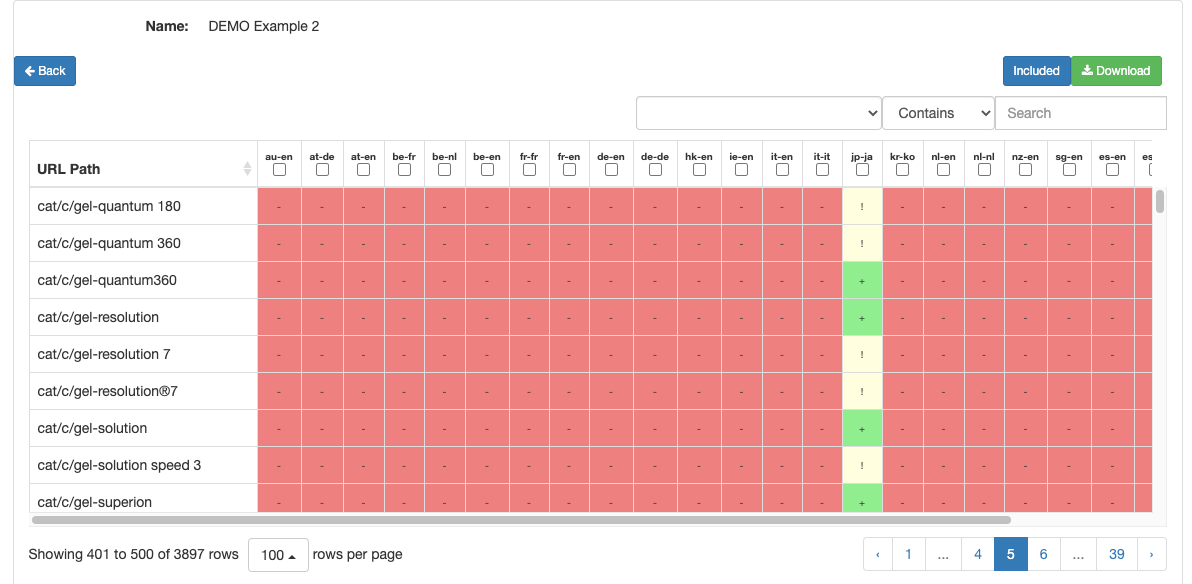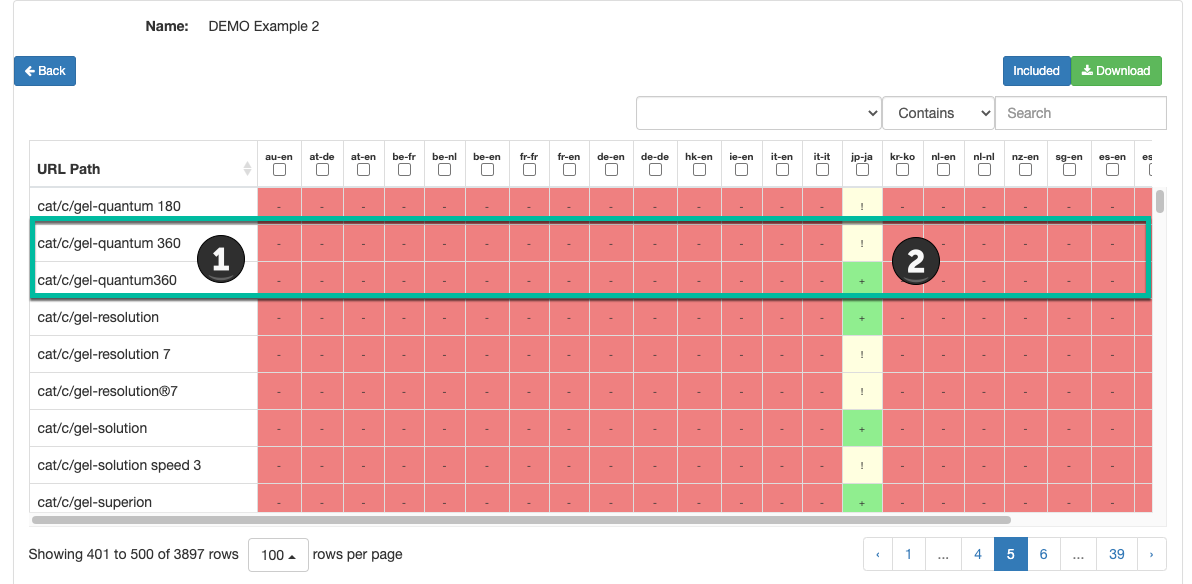Search Knowledge Base by Keyword
Using Missing Page Identification Feature
The Missing Page Identification feature quickly tests and identifies which pages are missing from your source file in each market. This feature is on the main “View” page with the link named “Missing URL”s Table.” In the screen capture below, we can quickly see the status of pages.
Red = page is missing from that country and language version
Green = the page is present in the database for that country and language version
Yellow = the page is in the database but has an error like a redirect or 404 status

 If a cell for a market is red that means there is not an equivalent page imported from the source. It may be missing from the source or have a different name. In this screen capture at the number (1) there are two versions of the gel-quantum 360. One has a space between the name and the number and the one below does not. This will count as two different pages. (2) Also note the page with the space had an error status with the yellow and exclamation point. In this case, the URL has a canonical that is different than the URL.
If a cell for a market is red that means there is not an equivalent page imported from the source. It may be missing from the source or have a different name. In this screen capture at the number (1) there are two versions of the gel-quantum 360. One has a space between the name and the number and the one below does not. This will count as two different pages. (2) Also note the page with the space had an error status with the yellow and exclamation point. In this case, the URL has a canonical that is different than the URL.
Most of our users download and share this report with the country managers, IT team, and localization teams to try and understand why the pages are missing. This was one of the most requested features.
How it works:
Once all the files are loaded we create a table that lists all URL’s added to the database and maps them to the appropriate countries. This is an easy-to-read table showing you where you do not have a URL match.
For each page and country language column a “green” entry” means there was a page found for this combination. If the cell has “red” then we did not find a match. You can download the report and share it with the local markets to understand why a page is not available. Most of the time, it is a problem with how the site is building XML site maps. In many cases, we find some markets are never updated. Once the problem is identified the pages can be submitted and traffic increases.
